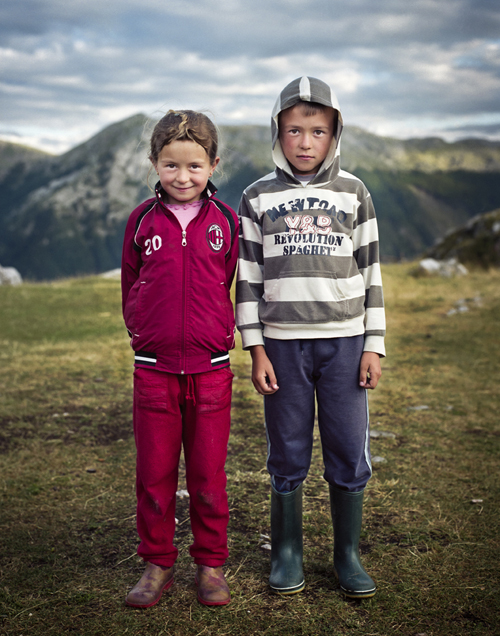When the camera illuminates stories: the work of Adnan Šačiragić

In preparing his portfolio for Dalhousie University's Environmental Design Studies program, Adnan Šačiragić (pronounced Sha-chi-ra-gich) realized that the majority of his work was photographic. That moment taught him that visual arts, design, and architecture are sibling diciplines—and in a surprise shift in focus, he applied instead to the Photography and Digital Imaging program at Holland College.
Since then, Adnan has blended his environmental and visual arts background in a documentary project that's proven a milestone—The Descendants of Lukomir, about the inhabitants of a remote village located in the Bjelašnica Mountains, Bosnia & Herzegovina.
Kate Inglis, friend of APS, interviews Adnan to hear more about how this tiny, remote village has not only changed his perspective, but affirmed his career path as an editorial and documentary photographer.
What compelled you about the village of Lukomir and its people?
Following the war, the majority of the villagers had left their homes and moved to the suburbs of Sarajevo, only to return in the summer months with their livestock, hoping that someday, socio-economic conditions would improve enough to allow them to return permanently. But as I explored the area for the first time in the summer of 2011, the villagers told me that no one planned on staying during the winter—marking the first time that no one has lived there year-round. With the hope of prosperity coming from larger cities, the existence of Lukomir is in question.

Are you Bosnian? If so, how did you end up in Canada, and do you go back often?
In the summer of 2008, I had the pleasure of working with Jonathan Ferrier and Lana Šačiragić on “An Ethnobotanical Trail Guide to the Medicinal Plants of Lukomir, Bosnia and Herzegovina”. The Canadian International Development Agency (CIDA) funded the research project. Our field study took place in the highland community of Lukomir, in the Olympic Mountains of Bjelašnica. The aim of the project was to raise awareness of the immense botanical diversity of the area, to preserve the local knowledge and customs, and to share that knowledge with others. As research assistant, my duties included collecting and categorizing plant samples, communicating with village elders and photographing the diverse landscapes, botanicals, and people of Lukomir.
The inspiring landscapes and village sparked my interest in environmental and sustainable living issues. Most notably, this experience inspired me to pursue photography beyond a hobby. This was my first trip to Lukomir. Since then, it has held a special place in my heart.

I was born in Sarajevo, Bosnia and Herzegovina in 1987. In 1992, at the start of the war, my family and I fled Sarajevo. In 1993, with the assistance of the Spring Park United Church, we were fortunate to be able to move to Charlottetown, PE. Since 1996, my family and I have returned regularly to visit family and friends.
Will you ever return to Lukomir to document its fate and the fate of its people?
Lukomir will be a long-term project. I hope to return this September and continue my environmental portrait series.
Tell us a little anecdote from your experiences among the people of Lukomir—what was the most memorable moment?
Every day, the villagers are faced with adversity. When setting out into the surrounding environment with their livestock, they face the difficult mountain terrain and climate. As well, the current socio-economic challenges (such as a lack of social assistance and representation in local government) are a huge deterrent to the prosperity of Lukomir and its villagers. However, their resolve and determination despite these challenges has taught me that anything can be overcome with the right attitude. Progress is slow, but it does take place.

Can the right photography help people, or change outcomes?
I truly believe that (documentary) photography, if done with respect towards the subject matter and the ideals of the project are undistorted, has the ability to change outcomes for the better. Photography may not be able to directly influence policy makers; however, it can become an important tool in raising awareness and informing the public.
Find more of Adnan's inspired work here.
Adnan's portrait credit: Ryan Wilson
